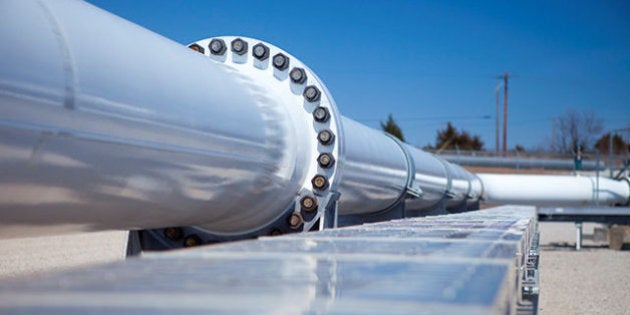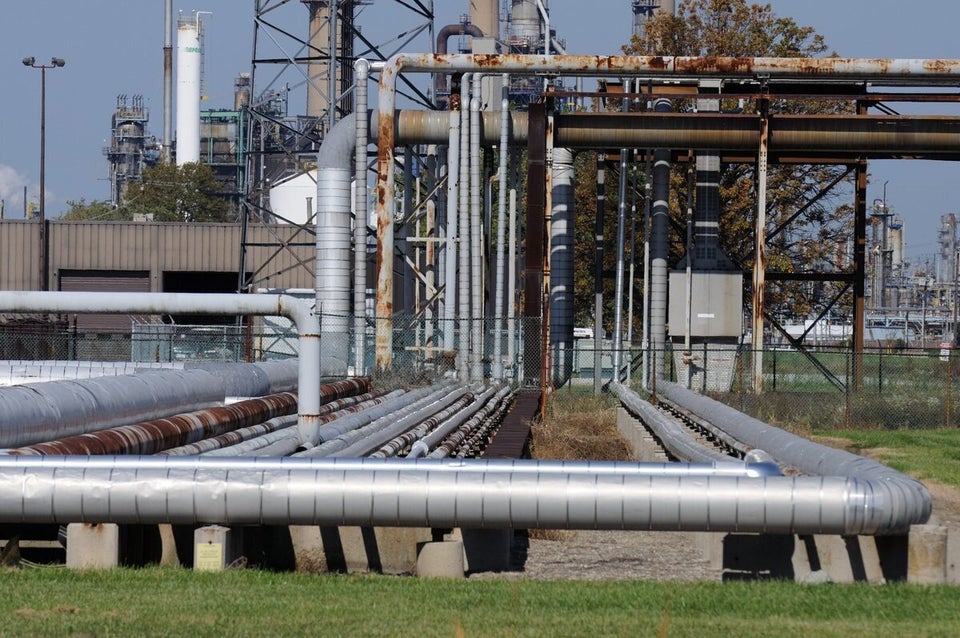
My blog post last week (I Support The Energy East Pipeline As A Pragmatic Environmentalist) made quite a splash resulting in me receiving a lot of both positive and negative feedback. Unfortunately, the vast majority of the negative feedback consisted of unsupported and/or unsupportable "facts" about the proposal. That being said, I figured I should write a follow-up post to clear up some of the myths and misconceptions swirling around about the Energy East pipeline proposal.
The first and most egregious of the myths surrounding the Energy East pipeline is that it poses too much of a risk to Montreal and its water supply. What amazes me is how quickly Montreal's civic politicians appear to have forgotten that Montreal is currently home to a home-grown refining capacity of 166,000 barrels per day (bpd) that depends on crude oil from an existing 74-year-old pipeline (the PMPL) as well as by rail.
The Montreal lateral of Energy East, that Dennis Coderre is fighting so valiantly to stop, represents a modern pipeline designed to replace that 74-year-old pipeline and the rail system that gave us Gogamas, Galenas and Lac-Mégantic and which crosses the St. Lawrence River immediately upriver from Montreal's biggest drinking water intake.
Looking on this from a pragmatic perspective, on one hand you have a brand new pipeline with all the most recent anti-corrosion and leak detection/prevention technologies and on the other hand you have a 74 year old pipeline combined with a rail link that has already caused more than one disaster... and the activists (and Denis Coderre) are pushing for the latter over the former?... I find this almost too absurd to say much more.
One feature of the Energy East pipeline proposal is that it provides an opportunity to replace that foreign oil with Canadian oil.
Another repeated myth sent my way came via the good people at Environmental Defence. They, inform us, via their YouTube video, that the Montreal refineries are "FULL" (yes they use the ominous full capitalization in their video) and thus Energy East represents "an export pipeline."
Now let's think about this for a moment. A refinery is an industrial facility that takes an input (crude oil); processes the input; and produces an output. Certainly a refinery will have storage tanks but those tanks need to be constantly re-filled.
A reasonable analogy to highlight the ridiculousness of the Environmental Defence argument would be my own minivan. Suppose I fill my minivan with gas. My gas tank is "full." Now if I drive my kids to their sports and activities for a week, the gas tank doesn't remain miraculously full, it empties. It will need to be re-filled at some time in the future.
Currently, the Quebec refineries along the Energy East pipeline are being supplied with oil from such sunny, peace-loving democracies as Algeria, Iraq, Saudi Arabia and Nigeria. One feature of the Energy East pipeline proposal is that it provides an opportunity to replace that foreign oil with Canadian oil. In doing so we can pump money back into the Canadian economy rather than siphoning it away to pay for foreign despots and their wars. So no, the refineries are not "FULL" they are, however, currently being supplied by other suppliers. These suppliers can just as easily be replaced by Canadian oil once Energy East has been completed.
The final myth I will puncture today has to do with the nature of the material that will be running through Energy East. Many activists (including this Huffington Post blogger Energy East Has No Place In The 21st Century) claim that the material that will be transported by Energy East cannot even be processed in the eastern refineries. This myth betrays a lack of understanding of the complexity of the Canadian oil industry.
Virtually everyone has heard of the Bakken oil fields in the U.S., but very few Canadians appear to be aware of how much of that Bakken Formation is in Canada. As this map shows almost half of the Bakken formation is in Saskatchewan. Saskatchewan produces over 500,000 bpd of oil and much of it is the light API fuel being sought by the Montreal refineries.
This explains why the Energy East pipeline includes the Cromer Lateral which will allow Saskatchewan to export this light crude directly to the people who are best equipped to refine it: Eastern Canadian refineries. So no, the Energy East pipeline will not be used solely for bitumen, as claimed by the uninformed activists. As described in their documentation it will supply Williston Basin crude (Canadian Bakken) to the Montreal refineries and thus replace American Bakken shipped via rail with Canadian Bakken supplied by a safer pipeline.
To be clear, the Energy East pipeline proposal is far from perfect; but any fair discussion of its merits should be limited to the facts and not dominated by the myths and fables being pumped out by ill-informed activists on a daily basis.
Correction: A previous version of this blog misstated Montreal's home-grown refining capacity. It is 166,000 barrels per day (bpd), not 386,000 bpd.
Follow HuffPost Canada Blogs on Facebook
ALSO ON HUFFPOST:
